Mixed Chicken Flocks: Plan Ahead Before Adding Pullets And Chicks #ad
<A version of this post was also published here on Fang Pet & Garden Supply’s blog>
Combining pullets and chicks with full-grown chickens is a challenge. #ad
Because pecking order is a serious matter, it can be dangerous and risky no matter the circumstances. Having a mixed chicken flock keeps things lively though! There is no question that we were entertained throughout the process, and perhaps even some of the adult chickens were too.
Sadly, we did lose a chick to what we believe was wry neck. One day she just wasn’t herself and passed away quickly. Even if you want it to be, chicken keeping isn’t always rainbows and unicorns.
Existing dynamics are a consideration in mixed chicken flocks
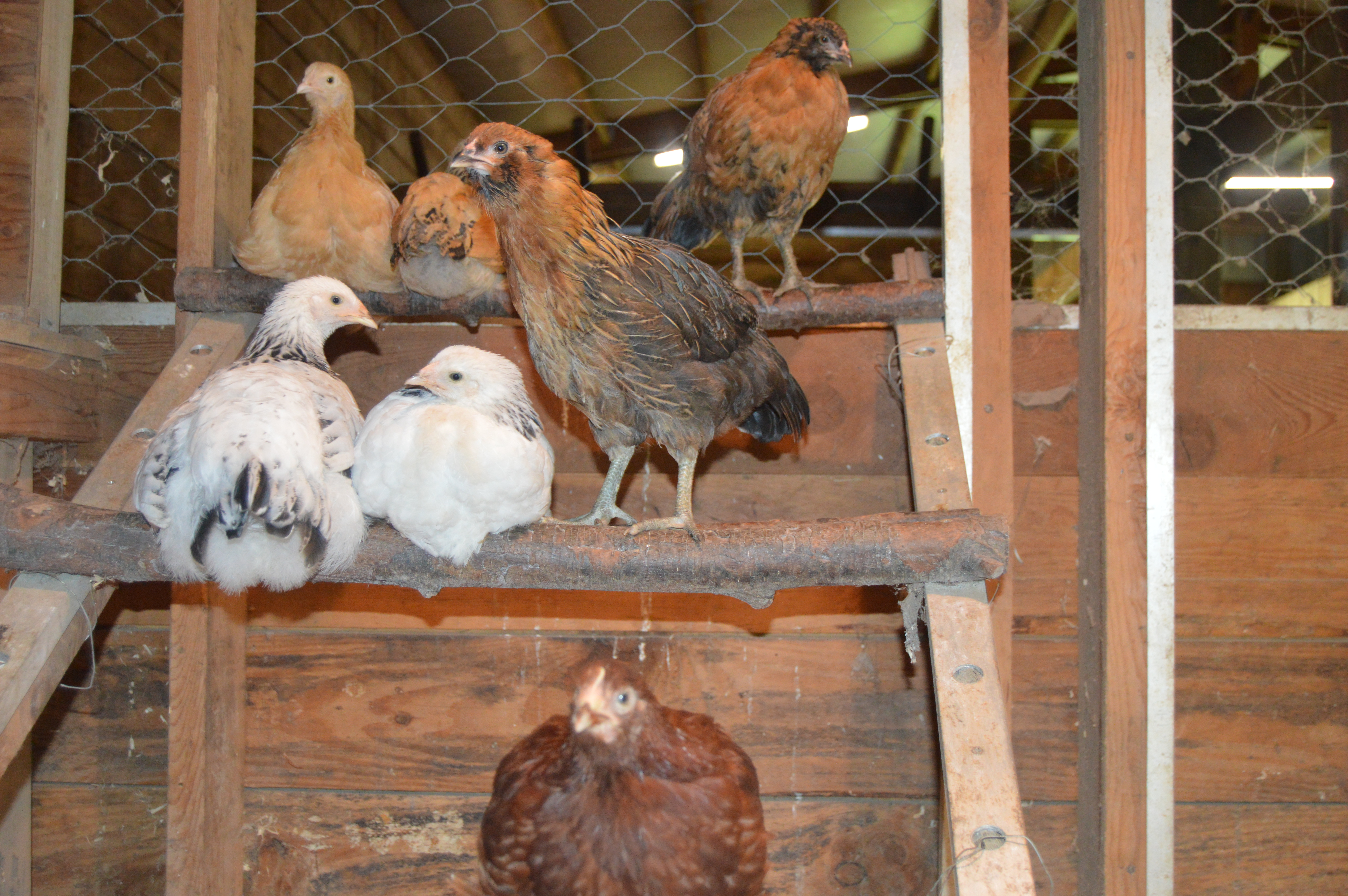
Our chicken flock already has a well-established mama hen and two pullets, so that was another dynamic to be considered before adding eight new pullets into the mix. These pullets we’re incorporating were raised separately by my neighbor.
Before beginning, we made some coop adjustments (more hardware cloth please!) and a transition plan that we closely followed. From a few hiccups, most days are going smoothly overall.
Fresh Eggs Daily has an entire post and recommendation for a transition playpen or fenced off area in the coop (or next to it) when mixing chicken flocks, which was super helpful. We did that for a week before making an actual introduction.
Here’s my top ten list for your toolkit before you try a mixed chicken flock in your coop!
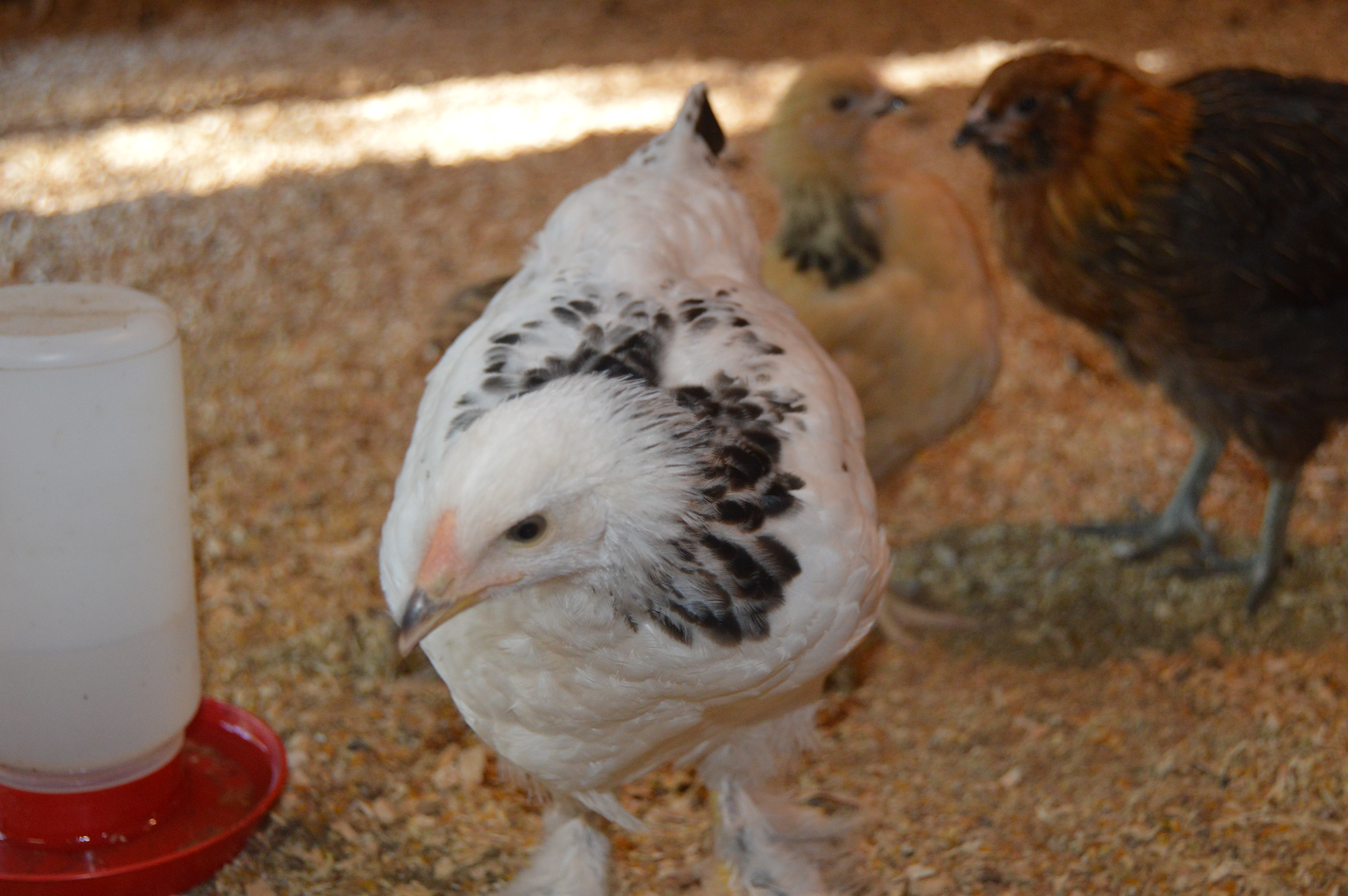
1. Space … and Perhaps Even a Little More Space: You do need a considerable amount of space and places for them to roost and rest (and escape other birds) throughout the day. We have tons of ladders, two sawhorses, and a smaller roosting ladder so they can chill without being bothered all the time for those lower in the pecking order.
2. Lots of Feeding Stations: Have More Than One – We Have Four!
3. Someone To Do Multiple Drive-by’s Throughout The Day: Outside of the bird we lost to wry neck, I also noticed one of the birds that happen to be tiny has a wound that scabbed over on her chest. She gets around fine, but I do check her out each day to make sure it’s healing. More eyes on the flock mean more folks to run interference if the chickens get pushy with each other.
4. Clean Water…A Must: All the chickens seem to be scratching near the water stations, so it feels like their water dishes get dirty quickly. Always make sure they have fresh water.
5. Mixed Flock = Lots More Chicken Manure. Clean up the poop under the roosting bars.
6. When to Transition From Starter to Grower? Feed based on the youngest member of the flock, and supplement as needed for the older birds (such as additional calcium sources for laying hens). A feed formulated for laying hens isn’t good for little chicks who don’t need that extra calcium yet. When I say we have a mixed flock, even our pullets are different ages within their little “gang.” RULE: At eight weeks it’s ok to transition to Grower feed. Scratch and Peck has a great post about this, and that is what we’ve been feeding since day one.
Scratch and Peck has a feed guide for laying hens, as well as a wealth of other information for chicken keepers. Here’s the link: https://www.scratchandpeck.com/learning-center/helpful-guides/
Our youngest hen is now eight weeks old, so we are ready for Grower feed.
RULE: When feeding a mixed chicken flock, feed according to the youngest members of the flock and supplement as needed for the older birds. That’s the foundation of feeding mixed flocks.
7. Supplements Are Key: Grower Grit is Key During This Transition
8. Transition Playpens Do Make a Difference: I mentioned this above briefly, but the concept of using a playpen to transition our pullets into the coop was brilliant. We kept them in this exact playpen for a week with food and water of course – all the big girls got to know them with the safety of netting between the pullets and the sharp beaks of the ladies!
9. Combat Boredom with Ways to Enrich Hens
To decrease any “Mean Girl” behavior in the coop (fall and winter often mean less time outside, after all) it’s nice to bring in some distractions. I recently gave two huge sliced up spaghetti squashes to the flock for them to peck at throughout the day.
10. Spread Some Love and Stick to a Routine
Chickens, like many animals, like a routine. It eases stress in their day to day life and helps them understand that their human caretakers are going to feed them and provide essentials every day. When we leave, we keep the chickens in the mobile coop for the day. They’re not able to free range, and I notice a lot of chatting coming from my fave RIR hen! The sounds and noises are very specific!
Chicken keepers need to consider a lot including the suggestions above. Having a plan makes this transition less stressful for the birds and humans. I wrote a post about chickens being complicated earlier this fall, and they are! When adding pullets to your existing flock, make sure you review this list and please comment below if you have any questions!
#ad Disclaimer: This is sponsored. We received product in exchange for an honest review. I only share information about products that I believe in and already fit into our doggie & chicken lifestyle and routine.
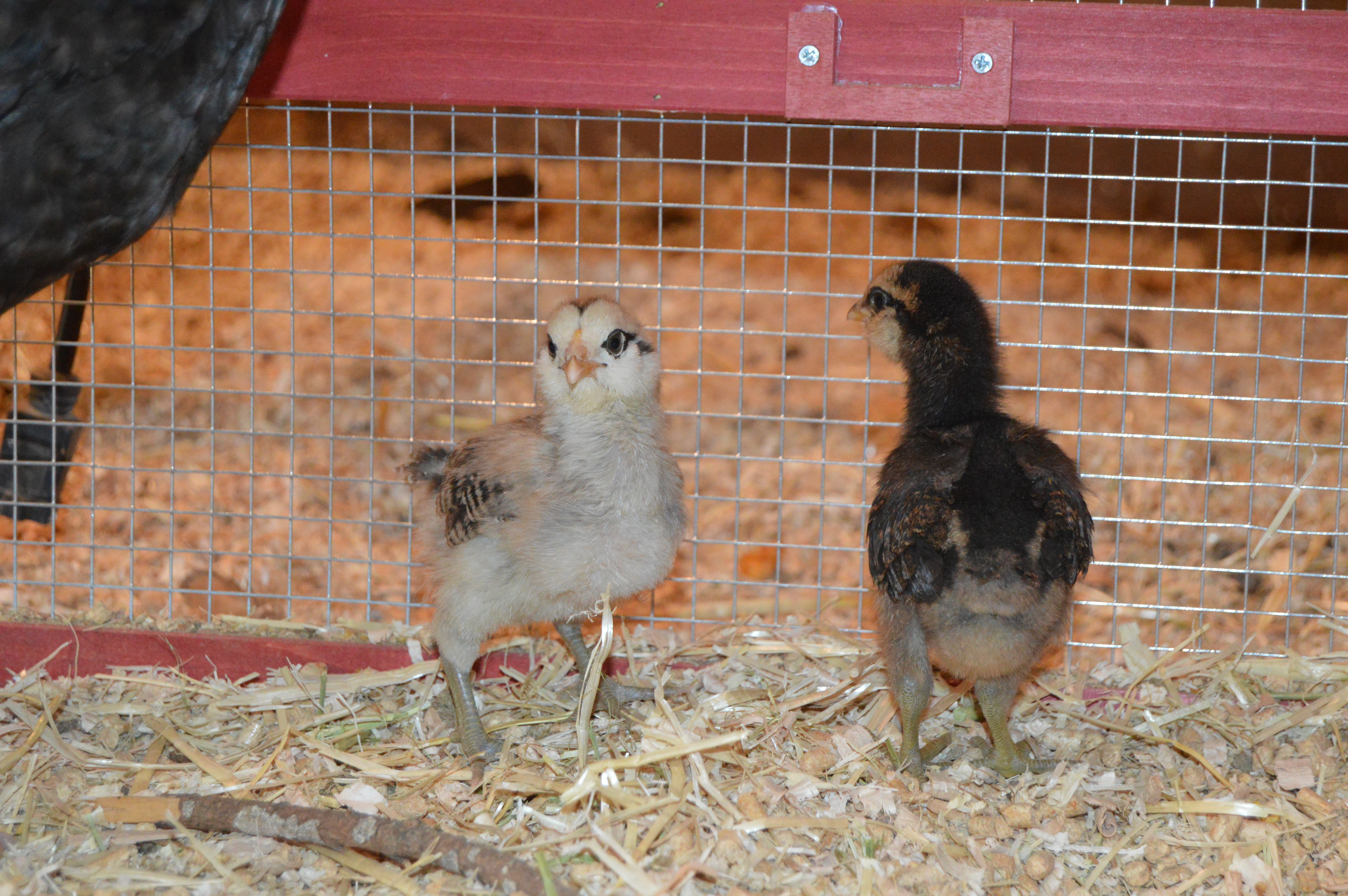
Pin me!
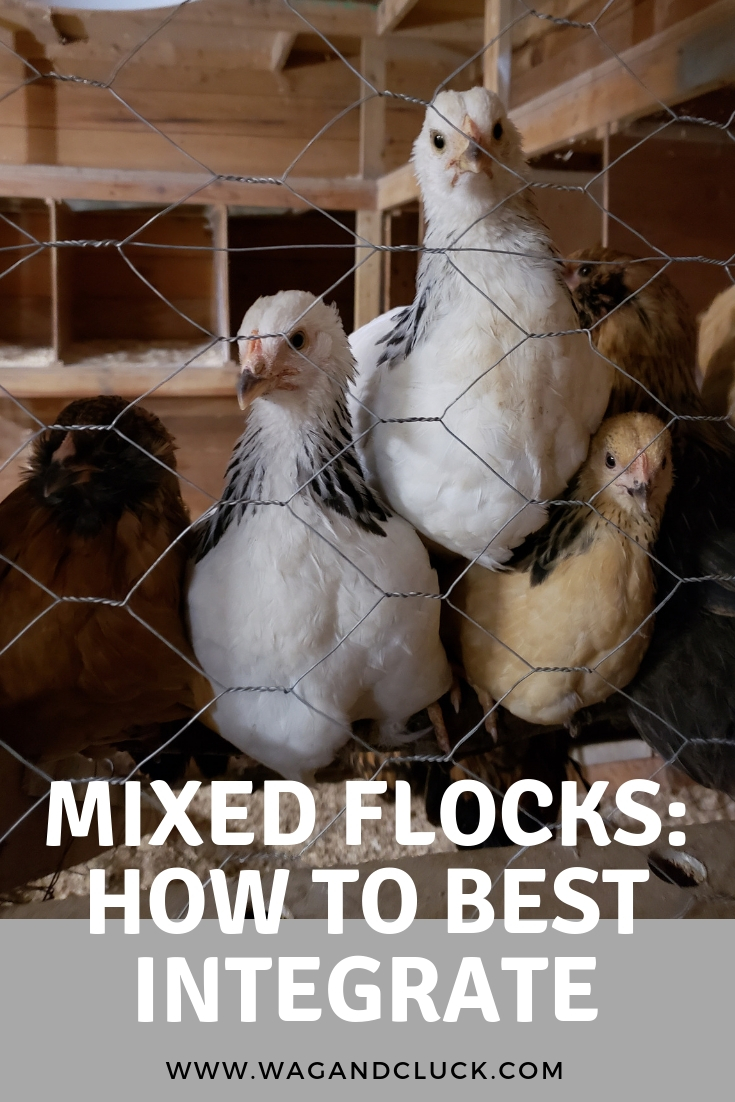

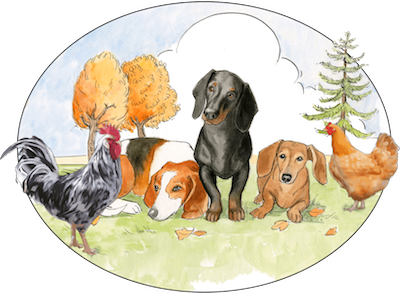
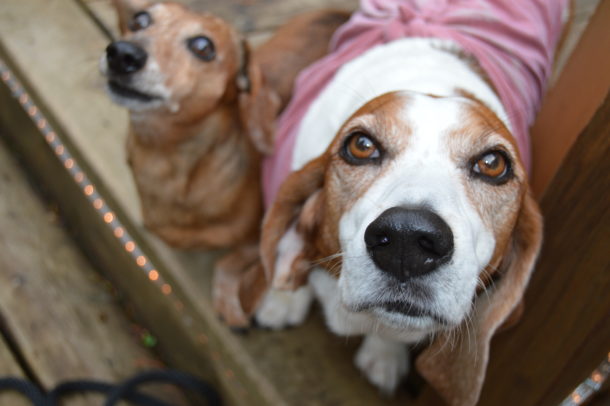
Great tips! I need to do more in the winter to keep them entertained, and I think throwing squashes in there is such a great idea. Last winter I also made some homemade suet and hung it in the coop in a cage, and they loved it.
We’ve probably always overdone it when it comes to integration. We keep them in the smaller cage within the coop for probably more like 3-4 weeks, until they seemed almost as big as the full grown birds. We ended up letting out the new guineas sooner though, and it went fine.
I can’t wait until we have our coop addition, because that will give us a separate area for bringing in newbies without having to use the dog crate, which got so messy!
Thank you so so much! It’s so windy here (like 40 mph) that I just brought them a bunch of scratch which I try not to do but I’m fairly certain they’re not leaving their coop area to free range today! Yikes! I would love your homemade suet recipe – would you mind sharing? No! stay the course as we likely introduced our guys a little too quickly. I think whatever your gut tells you about your birds is right – we’ve done it for shorter and longer periods and both had pros and cons. What is your coop addition?! I agree our playpen was honestly a poop disaster every day and they knocked over their water like 10X day… 🙂 Hope you are well!
Ours will leave the coop, but then they usually just go to the garage or the barn! Today the sun was out though, so they were on the front porch sunning for a while. 🙂
I will find that recipe and get it to you. Remind me if you don’t see it son.
Yes – poop disaster is the perfect way to describe the cage, and ours also constantly dumped their water and their food. The guineas were the worst because they are so spazzy. LOL!
We are doubling the size of our coop, so we’ll have a separate area for newbies, and more space to expand the flock. We’re also thinking about getting turkeys some day , and I think they need to be kept separate.
All is OK here, kind of crazy and stressful but we’ll get through. (nothing to do with the farm, just everyone around me having health issues and stuff).
I find that mine up in the mobile coop just stay under the coop and hang out if it’s not sunny! At least they stand together I guess! I cannot wait to read your email – it snowed!! Please please send me that recipe. I hated the playpen for that reason for sure – it was crazy gross. They couldn’t get their act together and it felt chaotic – your big coop addition is going to be so nice! I want geese! I hope everything with you and your fam is ok. Sending lots of positive vibes to you all.